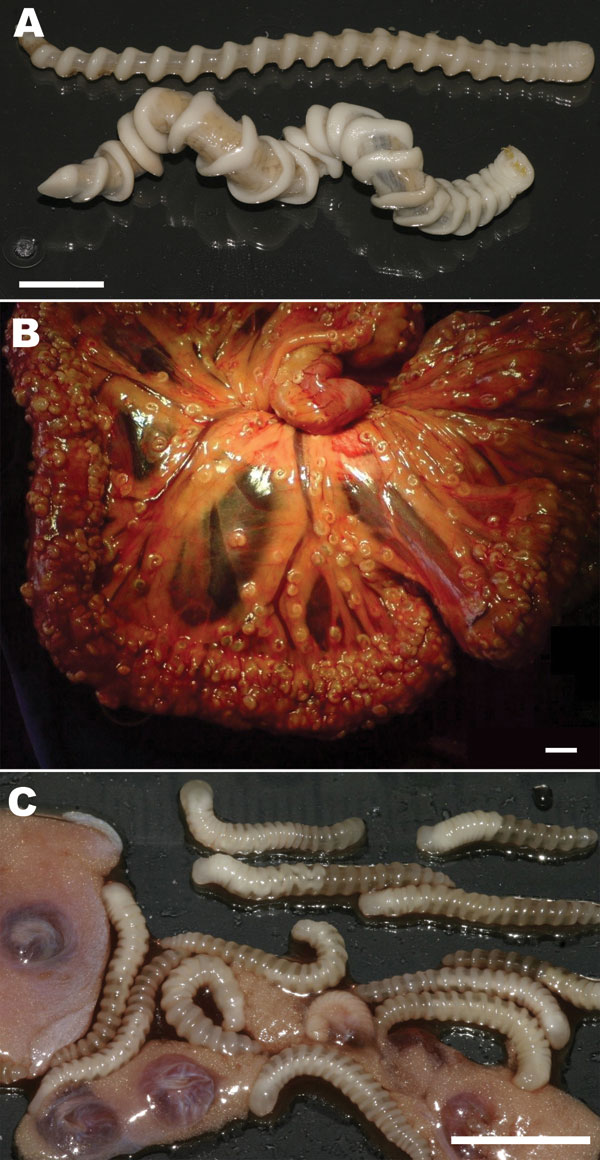Volume 17, Number 2—February 2011
Dispatch
Transmission of Armillifer armillatus Ova at Snake Farm, The Gambia, West Africa
Figure 1

Figure 1. Adult and larval Armillifer armillatus parasites. A) Ventral view of 2 adult A. armillatus parasites recovered from the lungs and trachea of a deceased rock python; a gravid female (bottom) and a pre-adult female (top) are shown. The parasites showed 20 and 18 marked body rings, and had a length of 10 cm and 9 cm and a body width of 5–8 mm and 3–5 mm, respectively. B) Heavily parasitized omentum of a female stray dog, showing typical encapsulated C-shaped larval stages of A. armillatus parasites. C) Larvae from the omentum. The larvae had a length of 18–19 mm and a body width of 2 mm and showed 20–22 rings. Scale bars = 1 cm.
Page created: July 13, 2011
Page updated: July 13, 2011
Page reviewed: July 13, 2011
The conclusions, findings, and opinions expressed by authors contributing to this journal do not necessarily reflect the official position of the U.S. Department of Health and Human Services, the Public Health Service, the Centers for Disease Control and Prevention, or the authors' affiliated institutions. Use of trade names is for identification only and does not imply endorsement by any of the groups named above.